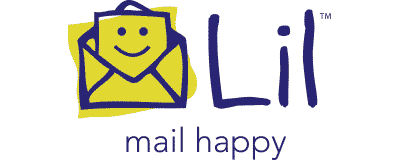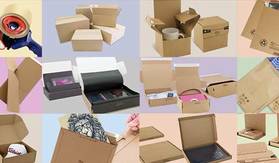
How to optimise your eCommerce packaging to go eco-friendly
When you keep your packing and shipping process as eco-friendly as possible, everyone feels the benefit. Smarter, greener packaging not only means less waste for your customers to deal with, helping you stand out as a responsible business, but it also means that you do your bit for the planet and even save on costs. But how can you make sure that the packaging you use is actually eco-friendly and that your eco-friendly approach to business is reaching the right audiences? Here we take a closer look into ways you can go eco-friendly with your packaging - whilst at the same time boosting your customers' opinion of your brand and end product.
Becoming eco-friendly is everyone's business
Not long ago many people begrudged having to separate the recycling from the rubbish on trash collection days - now thankfully attitudes have changed. In a world where we're all more environmentally conscious, plastic carrier bags are becoming a rare sight and far more of us head into our favourite coffee shop with our cup for life, and a leading supermarket has even unveiled its first 'plastic-free' aisle. Consumers are ready and willing to do their bit for the environment and they expect businesses to do the same. A study of buyers across the globe found that a third of consumers actively choose to buy from brands that they think are taking their social and environmental responsibilities seriously. The message seems clear: an eco-friendly approach isn't merely a "nice thing to have", it's actually a major selling point and something that can help give you a valuable competitive edge. Offering an attractive alternative to throwaway mass production, many small businesses are justifiably proud of their eco-friendly credentials, especially where materials are re-purposed, products are handmade and the end result is designed to be cherished and not used then discarded.
But if you overlook it, it's so easy for your packaging to become a weak link in what's an otherwise impeccably green approach to business. No matter how sustainable your product is, if your customer is forced to wade through layer-upon-layer of plastic or other environmental "nasties" just to get to it - your eco-friend brand statement will end up in the bin right alongside the single-use plastic packaging.
With all this in mind, let's take a look at some ways in which you can keep your packaging process eco-friendly.
Choose eco-friendly companies to work with
The first stage is to make sure you work with responsible suppliers. For shipping, try to take a look at the corporate social responsibility policy of the provider (this should be on their website or available on request). Positive signs to look for include realistic targets for reducing their CO2 emissions, along with solid evidence that the company is actually working towards those targets. If they've increased their use of electric and green fuel vehicles, along with more efficient, streamlined distribution routes, you're on the right track. For packaging suppliers, check that the products are constructed from recyclable, biodegradable materials. Be careful here though: the cardboard box may have a recycling logo on it, but what about the plastic wrapping and tape and even the glue? So that you can pick out your packaging options with confidence, focus on a stockist that's committed to eliminating environmentally-damaging materials right across its entire product range.
All of our cardboard boxes, for instance, are certified by the Forest Stewardship Council (FSC) or Programme for the Endorsement of Forest Certification (PEFC) and are confirmed 100% recyclable. These are good signs to look for, and on top of this, have a look to see if the supplier is set to eliminate all plastic from their line-up in the near future. We're also relaunching our envelope ranges (our plastic-free alternative to the bubble mailer) with 100% post consumer up-cycled and recycled brown-line chip board material later this year, which leads us nicely on to the next topic
Choosing the right material
Once you've got a green supplier to work with, you'll then need to make sure you pick the most effective, environmentally-friendly materials for your packaging. As you go through your options, think about the following:- Keep it simple for your customers: when you stick to a single type of material for your packaging, it makes it easier for your customer to dispose of it in one place. Ideally, a box should be simple to deal with, as it usually goes in the recycling bin. Try not to make it more difficult than it needs to be: avoid using unnecessary wrapping or awkward plastic inserts, or worse still - polystyrene void-fill!
- Make it reusable: this is especially important in the businesses where a high rate of returns is the norm (fashion, for example). If it's re-sealable, it means your customers aren't forced to patch up the packaging with lots of plastic tape, making it an altogether greener and less frustrating experience.
- Recyclable filling: if the package needs to be bulked out to make it safe for transit, perhaps for fragile items, then go for options such as recycled packing paper.
Avoid wasted space
'Dead space' is something you should definitely aim to reduce as part of your eco-friendly strategy - using packaging that just fits your items perfectly is your best bet. Our Twistwrap packaging, for example, provides a protective outer layer that tightly follows the contours of the product you're trying to ship, keeping wasted space at a minimum (as well as negating the need for messy void fill). Likewise, specialist packaging for specific products (like books and vinyl records) also provides essential protection, without adding unnecessary bulk. For this, our Bookwrap and Flatpack are ideal solutions.
This type of approach can result in a win-win situation all round. It means your customers have less waste to dispose of, while limiting weight and the amount of space needed for the box in transit, helping you to keep shipping costs as low as possible and ultimately having a smaller impact on the environment (less packaging waste, less materials, less plastic, less fuel used in transit there's more but you get the idea).
Tell customers about your eco-friendly approach
The study from earlier found that one in five consumers would actively choose brands if they made their sustainability credentials obvious on the packaging and in their marketing. There's a lesson here for all e-sellers: once you've made the effort to make your packaging processes more environmentally friendly, make sure you tell your customers about it.
Whether this is on your 'about' page, or as part of your product descriptions, this will give you the edge over your competitors and potentially sway a buyer's decision. At the end of the day, the ideal packaging solution really ought to enhance your brand, protect your product and not have a negative impact on the environment.
If you haven't found your solution yet, our Bespoke range is designed to meet all your eco-conscious eCommerce needs, whilst keeping your products safe and protected during transit. If you'd like to find out more about our range, head over here for more information or contact us to arrange a quote for custom size and print.




Leave a comment